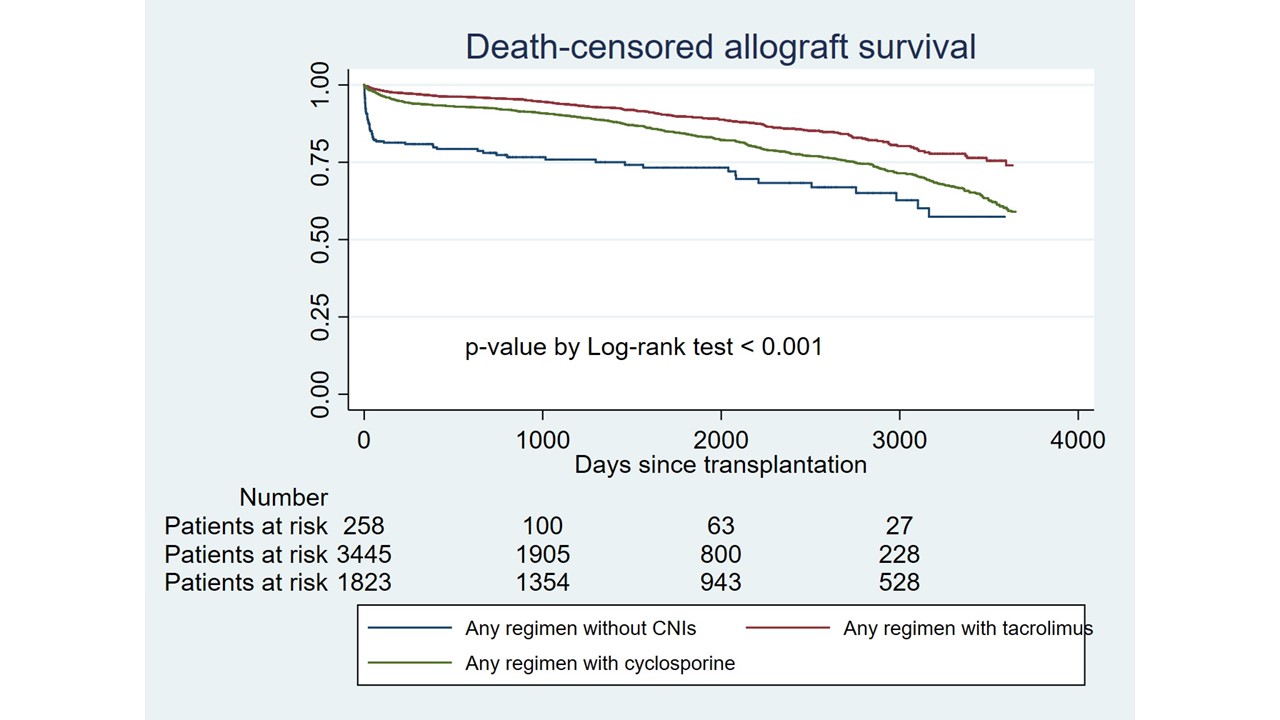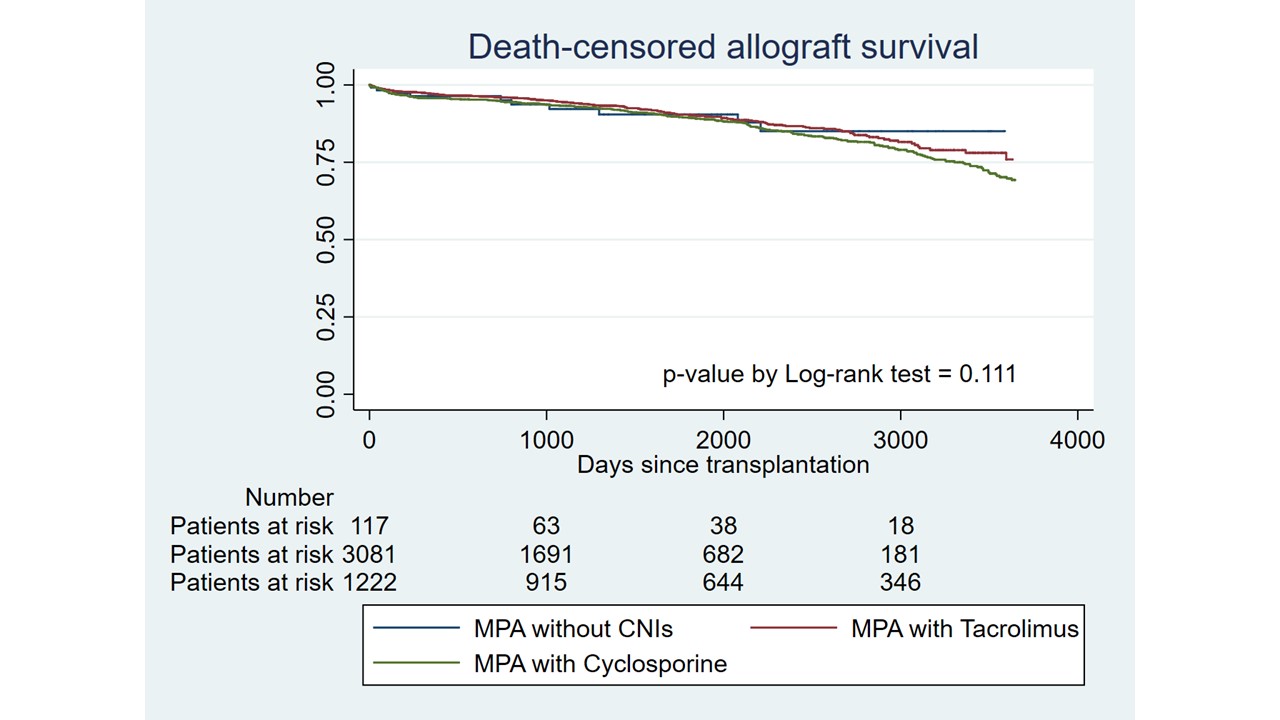Calcineurin Inhibitors and Long-Term Outcomes of Kidney Transplantation from Thai Transplant Registry
Chulalongkorn University, Bangkok, Thailand
Meeting: 2019 American Transplant Congress
Abstract number: C71
Keywords: Calcineurin, Graft failure, Graft function, Kidney transplantation
Session Information
Session Name: Poster Session C: Kidney Complications: Late Graft Failure
Session Type: Poster Session
Date: Monday, June 3, 2019
Session Time: 6:00pm-7:00pm
 Presentation Time: 6:00pm-7:00pm
Presentation Time: 6:00pm-7:00pm
Location: Hall C & D
*Purpose: Calcineurin inhibitors (CNIs) have became the primary immunosuppressive medications (IS) for kidney transplantation (KT) in the current era. However, the long-term outcomes of KT are lacking in terms of different CNIs (tacrolimus vs cyclosporine (CsA)) used. We want to compare the long-term allograft outcomes regarding CNIs used.
*Methods: Data was derived from the Thai Transplantation Registry from 1992 to August 2018, focused on adult (age ≥ 18 year-old) patients. Information of recipients, donors, immunologic risks, IS used, allograft survival, and serum creatinine after transplantation were analyzed. We calculated the 10-year death-censored allograft survival by Kaplan-Meier analysis and Log-rank test.
*Results: Total 6784 patients from the registry were included. There were 305 patients who did not received any CNIs in their IS regimens. Total 3824 patients received tacrolimus and 2655 patients received cyclosporine. Kaplan-Meier curve showed that regimen containing tacrolimus had the highest 10-year death-censored allograft survival (74%), followed by cyclosporine (59%), while regimen without CNIs had the lowest survival (57%) (p<0.001). However, when focused on only patients who received mycophenolic acid (MPA) with CNIs, the survival rates were not different. During the first 5 years, serum creatinine was significantly lower in patients who received tacrolimus and MPA, compared with patients who received CsA and MPA. However, the difference in serum creatinine between the 2 groups was lost after 8 years.
*Conclusions: Although patients received CsA had lower 10-year allograft survival, compared with tacrolimus. The survival rate was not different in subpopulation received MPA with CNIs. In the first 5 years, serum creatinine was lower in patients who received tacrolimus, but became no difference in later period.
| Variables | No CNIs in regimen (305) | TAC (3,824) | CsA (2,655) | P-value |
| Recipient age (years) | 44.1±12.4 | 44.6±12.0 | 43.3±11.7 | <0.001 |
| Recipient gender (male) | 63.8% | 62.2% | 64.4% | 0.178 |
| Dialysis vintage (years) | 3.8±3.2 | 4.0±3.5 | 3.4±3.3 | <0.001 |
| Donor age (years) | 37.4±13.7 | 38.4±13.0 | 35.9±10.2 | <0.001 |
| Cold ischemic time (hours) | 13.4±9.8 | 12.1±10.0 | 10.1±10.6 | <0.001 |
| HLA mismatch | 2.4±1.6 | 2.6±1.6 | 2.0±1.7 | <0.001 |
| Panel reactive antibody (%) | 3.3±13.2 | 5.1±17.6 | 1.8±10.8 | <0.001 |
To cite this abstract in AMA style:
Udomkarnjananun S, Townamchai N, Avihingsanon Y, Praditpornsilpa K. Calcineurin Inhibitors and Long-Term Outcomes of Kidney Transplantation from Thai Transplant Registry [abstract]. Am J Transplant. 2019; 19 (suppl 3). https://atcmeetingabstracts.com/abstract/calcineurin-inhibitors-and-long-term-outcomes-of-kidney-transplantation-from-thai-transplant-registry/. Accessed December 16, 2025.« Back to 2019 American Transplant Congress


